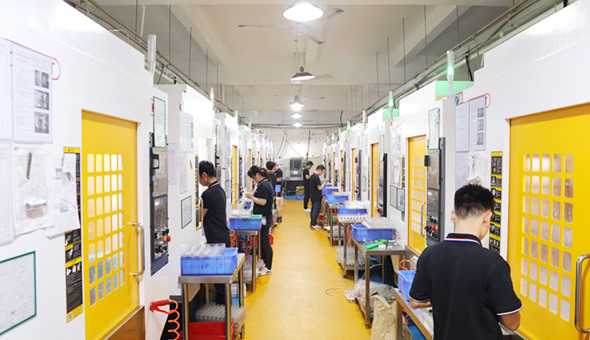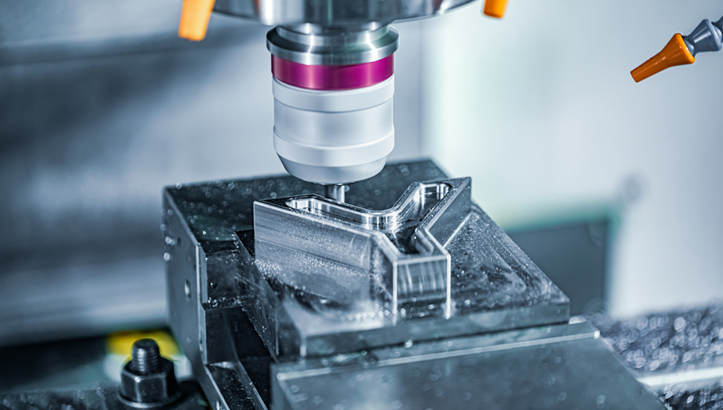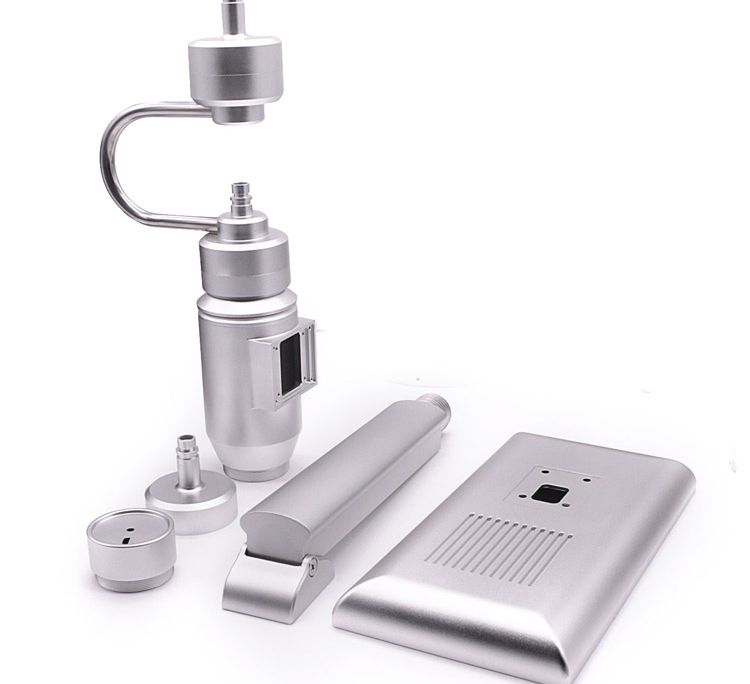10 Benefits of CNC Machining and CNC Milling
In the world of modern manufacturing, CNC machining and CNC milling have revolutionized the way industries produce high-quality parts. These advanced technologies provide unparalleled precision, speed, and efficiency. But what are the key benefits of these methods, and why should businesses choose them over traditional machining techniques? This article explores the advantages of CNC machining and CNC milling, as well as some of the challenges involved, helping you understand why these technologies are integral to today’s manufacturing processes.
What is CNC Machining?
CNC machining is an umbrella term used to describe various manufacturing processes in which a CNC machine is controlled by a computer to automate tasks like cutting, drilling, grinding, and turning. Unlike manual machining, where operators control the machine tools, CNC machining uses numerical control (NC) programming to dictate machine movements. This allows for highly detailed and repeatable production runs with minimal human intervention.
There are several types of CNC machines, including CNC milling machines, CNC lathes, and CNC routers, each designed for specific manufacturing tasks. However, they all share the common advantage of providing greater precision, speed, and efficiency compared to manual operations.

What is CNC Milling?
CNC milling is a form of CNC machining that utilizes rotary cutters to remove material from a workpiece. The workpiece is held in place on a CNC milling machine while the rotating cutter moves in multiple axes to achieve the desired shape. CNC milling machines can be configured with a variety of cutting tools, including drills, reamers, and taps, making them highly versatile for a range of applications, from simple holes to complex three-dimensional shapes.
The ability to adjust the position of the cutter and the workpiece in multiple axes (typically three or more) allows for highly complex and precise parts. These parts are used in industries ranging from aerospace, automotive, and medical device manufacturing, to electronics, optics, and consumer products.
Note: If you want to learn more about CNC milling, you can read the following articles:
CNC Milling Guide: Definition, Working Principle, Applications
Study Guide: CNC Milling vs CNC Drilling
What is a CNC Machine?
A CNC machine is a machine tool that uses a computer to control its movements and operations. These machines perform manufacturing tasks such as cutting, shaping, drilling, and milling based on numerical control codes fed into the system. Common types of CNC machines include:
CNC Milling Machines: These machines use rotary cutters to remove material and can perform a range of operations like drilling, boring, and tapping.
CNC Lathes: These machines rotate the workpiece while a stationary cutting tool shapes it, often used for parts with cylindrical geometries.
CNC Routers: Typically used for wood and composite materials, CNC routers are similar to milling machines but often offer larger working areas.
CNC EDM (Electrical Discharge Machines): These are used for very precise cutting of hard metals, and they work by using electrical discharges to erode material.
Note: If you want to learn more about EDM, you can read this article: What is Wire EDM?
CNC machines can be programmed to perform very specific tasks with precision and repeatability, making them ideal for producing high-quality parts in large quantities.
What are the Advantages of CNC Machines?
CNC (Computer Numerical Control) machines have revolutionized manufacturing, offering numerous advantages that make them essential in modern production environments. Below are 10 key benefits:
1. High Precision
One of the standout features of CNC machines is their ability to achieve extreme precision. Whether you need tolerances within 0.01 mm or tighter, CNC machining can consistently produce parts with the utmost accuracy. This level of precision is particularly important in industries such as aerospace, medical, and electronics manufacturing, where even the smallest deviation can result in product failure.
2. Automation
Once a CNC machine is set up, it can operate autonomously. The machine will continue to produce parts without the need for continuous human intervention, which can increase production efficiency and reduce labor costs. The automation of the process also eliminates the risk of human error, which is common in manual machining.
3. Flexibility in Material Use
Whether it’s metals, plastics, or composites, CNC machining can handle a wide range of materials. The versatility of CNC machines enables manufacturers to work with complex materials like titanium, aluminum, stainless steel, or even exotic alloys. This allows businesses to meet the specific needs of different industries with a single machine.
4. Ability to Produce Complex Parts
CNC machines are capable of producing parts with intricate features, such as small holes, precise cutouts, and complex geometries. For example, CNC milling can create 3D parts that would be difficult or impossible to produce using traditional machining methods. This makes CNC machining ideal for industries that require high complexity, such as aerospace and medical equipment.
5. High Repeatability
Once the program for a part is loaded into a CNC machine, it can be executed repeatedly without deviation. This consistency ensures that every part produced will have the same exact specifications, which is crucial for high-volume production.
6. Faster Production Speed
With CNC machining, once a program is written and the machine is set up, parts can be produced much faster than with traditional methods. The machine can work continuously, significantly increasing production throughput. Additionally, the precision of CNC machining reduces the need for rework or quality checks, further speeding up production.
7. Reduced Waste
One of the major benefits of CNC machining is that it reduces material waste. The program for CNC machines is designed to optimize the material usage, ensuring minimal waste during production. This contributes to cost savings and is also beneficial for environmental sustainability.
8. Improved Safety
The automation of CNC machines significantly reduces the risk of human injury. Operators interact with the machines mostly for setup, programming, and maintenance, while the machines perform the actual cutting and shaping of the materials. With safety guards and automatic shutdown features, CNC machines help ensure a safer working environment.
9. Cost Efficiency in the Long Run
Although the upfront costs of CNC machines can be high, they offer long-term savings. CNC machining reduces the need for manual labor, minimizes waste, and speeds up production time, leading to significant savings in both labor and material costs over time.
10. Reduced Lead Times
Since CNC machines can operate autonomously, parts can be produced much faster than with manual methods. This leads to shorter lead times, which is critical for businesses that need to meet tight deadlines or quickly respond to changes in demand.
What are the Advantages of a CNC Milling Machine?
CNC milling machines are a staple in modern manufacturing due to their versatility and ability to produce complex parts with high efficiency. These machines utilize a rotating cutter to remove material from a workpiece and are capable of working with various materials, including metals, plastics, and composites. Below are 10 key advantages of using a CNC milling machine:

1. High Precision
Like other CNC machines, CNC milling machines are capable of producing parts with extremely high precision. This is crucial for applications where the slightest variation in part dimensions can result in failure.
2. Versatility
A CNC milling machine can handle a variety of tasks, including cutting, drilling, and tapping, making it highly versatile for producing different types of parts. It can also work with a wide range of materials, including metals, plastics, and composites.
3. Ability to Create Complex Geometries
With the ability to work on multiple axes, CNC milling machines can create complex geometries and intricate designs that would be challenging or impossible with traditional methods.
4. High-Speed Operations
The ability to operate at high speeds allows CNC milling machines to increase productivity, making them suitable for industries that require fast turnaround times, such as automotive and aerospace manufacturing.
5. Precision in Surface Finish
CNC milling allows for smooth and accurate surface finishes, which is essential in industries such as medical device manufacturing, where precise and polished surfaces are required.
6. Increased Accuracy
Since CNC milling machines operate under computer control, the risk of human error is minimized, ensuring parts are made to exact specifications every time.
7. Less Material Waste
CNC milling machines are highly efficient in material use, as they are able to cut with extreme accuracy, reducing scrap and waste material during production.
8. Flexible Production
With the ability to easily reprogram CNC milling machines, manufacturers can quickly adapt to new designs or production runs, providing flexibility in production schedules.
9. Improved Safety
As with other CNC machines, CNC milling machines operate automatically, reducing the risk of operator injury. Safety features like automatic shutoffs and safety barriers also enhance the safety of workers.
10. Reduced Setup Time
Unlike traditional milling methods, which require manual adjustments, CNC milling machines can quickly switch between different tasks with minimal downtime, improving production efficiency.
What are the Disadvantages of CNC Milling Machines?
While CNC milling machines offer many advantages, they also come with some challenges:
High Initial Cost: The purchase price of CNC milling machines can be significant, making them a considerable investment for small businesses.
Maintenance Costs: Regular maintenance and servicing are required to keep CNC milling machines in optimal condition, which can add to operational costs.
Skilled Labor Required: Operating CNC milling machines requires skilled personnel who can program, set up, and troubleshoot the machines.
Limited by Machine Size: Larger parts may require specialized machines, which can increase costs and complexity.
Complex Setup Process: Setting up CNC milling machines can be time-consuming, especially for custom or one-off parts.
How Much Are Milling Machines and Other CNC Machines?
The price of CNC milling machines and other CNC machines can vary significantly based on factors such as the type, size, complexity, and functionality of the machine. Basic CNC milling machines for simple operations can cost anywhere from $10,000 to $50,000, depending on the manufacturer and specifications. These machines are typically suited for smaller, less complex projects and are ideal for entry-level operations.
For more advanced machines with capabilities like multi-axis milling, 5-axis machining, and enhanced automation features, the price can exceed $100,000 or more. High-precision machines used for complex tasks, such as in aerospace or medical device manufacturing, can easily reach prices of $200,000 or higher.
In addition to the initial purchase price, there are other costs associated with owning and operating CNC machines. These include:
Installation Costs: Setting up a CNC machine in your facility can require specialized tools, equipment, and labor, adding an extra cost to the purchase price.
Maintenance and Repairs: Routine maintenance and occasional repairs are necessary to keep the machines running efficiently. This can add to the long-term cost of ownership.
Training Costs: Ensuring that your operators are properly trained to use the CNC machines efficiently can incur additional expenses. Many manufacturers offer training programs, but this may come at an extra cost.
Additionally, there may be costs associated with software for machine control, tooling for different jobs, and post-processing equipment to complete parts after machining.
Note: If you want to learn more about CNC milling, you can read the following articles:
CNC Machining Cost Control Guide: Identify Influencing Factors and Cost-Saving Strategies
How Much Does It Cost to CNC Machining Aluminum Parts?
How Much Does CNC Milling Cost for Custom Machining Parts?
The cost of CNC milling for custom parts depends on various factors, such as part complexity, material used, and production volume. On average, you can expect to pay anywhere from $50 to $200 per hour for CNC milling services. Custom parts may also require additional setup and programming time, which can affect overall pricing.

Is CNC Machining Better Than Conventional Machining?
CNC machining offers several advantages over conventional machining methods, making it a preferred choice in many industries. Here’s their comparison:
Precision: One of the most significant benefits of CNC machining is its ability to produce high-precision components consistently. CNC machines are controlled by computers, ensuring that the machining process is executed with extremely tight tolerances. This precision is crucial in industries such as aerospace, medical devices, and electronics, where even small variations in part dimensions can have a significant impact.
Automation: Unlike conventional machining, which requires manual intervention from operators, CNC machining is highly automated. Once the program is loaded, the machine can run with minimal human intervention, reducing the chance of errors and improving overall efficiency. This automation also allows for quicker turnaround times, as machines can run 24/7 with minimal downtime.
Versatility: CNC machines are capable of handling a wide variety of materials, from metals to plastics, and can execute complex operations such as drilling, milling, turning, and grinding—all with a single machine setup. In contrast, conventional machining may require multiple machines for different operations, increasing setup times and costs.
Complex Geometries: CNC machining excels at producing parts with complex shapes and intricate features that would be difficult or impossible to achieve with conventional machining methods. 5-axis CNC milling machines, in particular, can machine complex geometries in a single setup, making them ideal for parts with multiple angles or detailed contours.
Reproducibility: Once the program for a specific part is created, CNC machining can produce identical parts with high reproducibility. This is particularly valuable for high-volume production runs where consistency is key. In contrast, conventional machining relies more heavily on operator skill and may experience more variability between parts.
Labor Costs: With CNC machining, operators can oversee multiple machines at once, which reduces the need for skilled labor on the shop floor. Conventional machining, on the other hand, requires more manual labor, which can increase labor costs and lead to longer production times.
Speed: CNC machining tends to be faster than conventional machining for complex parts due to the automation and precision. While conventional machines may require slower, manual adjustments and longer cycle times, CNC machines can work more efficiently, reducing overall production time.
Overall, CNC machining is often the better choice for custom machining parts that require high precision, complex geometries, and efficient production. While conventional machining methods may still be suitable for simple parts or small runs, CNC machining offers superior results in terms of precision, repeatability, and versatility, making it the go-to option for many industries.
What is the Difference Between CNC Milling and CNC Machining?
While CNC milling falls under the category of CNC machining, there exist significant differences between the two processes. Below is a comprehensive comparison:
| Aspect | CNC Milling | CNC Machining |
|---|---|---|
| Definition | A specific type of CNC machining that uses rotary tools to remove material and shape parts. | An umbrella term that encompasses all computer-controlled machining processes, including milling, turning, and drilling. |
| Primary Function | Focuses on the removal of material to create flat, contoured, or detailed surfaces. | Refers to any machining process controlled by a computer, such as milling, turning, drilling, grinding, and more. |
| Machining Process | Involves rotating cutting tools (e.g., end mills, drills) that remove material from the workpiece. | Includes multiple processes like turning, grinding, milling, and more, depending on the application. |
| Type of Parts Produced | Primarily used for producing flat, cylindrical, or detailed parts with specific surface finishes. | Can produce a wide range of parts, including round, cylindrical, and complex geometries, depending on the type of CNC machine used. |
| Common Applications | Producing parts such as brackets, housings, and plates, often with detailed surface features. | Used for manufacturing parts across industries, including aerospace, automotive, medical, and electronics, with varying machining methods. |
| Tools Used | Rotary cutting tools, such as end mills, drills, or face mills, are used for material removal. | Involves a variety of tools depending on the type of machining process, including lathes, drills, grinders, and other specialized tools. |
| Complexity | CNC milling is highly versatile for 2D and 3D shapes, complex surfaces, and tight tolerances. | CNC machining is versatile across different processes and materials, capable of performing tasks such as turning, drilling, and grinding. |
| Machine Type | CNC Milling Machines (e.g., 3-axis, 4-axis, and 5-axis machines). | Includes multiple types of machines such as CNC lathes, CNC grinders, and CNC mills. |
| Precision | Known for its high precision in cutting and shaping parts with complex geometries. | Offers high precision across a variety of machining types, but the precision depends on the specific process and machine used. |
| Material Removal Process | Material is removed using rotating cutting tools that move in various axes (X, Y, Z, and sometimes A or B). | Material removal depends on the machine used, which could include cutting, turning, grinding, or even laser cutting for precise operations. |
| Speed and Efficiency | Highly efficient for producing medium to high-precision parts, especially when multiple passes are required. | Generally offers high efficiency for mass production but can be slower for certain processes like turning or grinding. |
In Conclusion
CNC machining and CNC milling offer numerous benefits, from high precision and flexibility to cost-effectiveness and automation. These technologies continue to revolutionize manufacturing, enabling industries to create parts faster, cheaper, and with greater accuracy. Whether you’re working with automotive, medical, or aerospace parts, CNC machining and CNC milling are indispensable tools for achieving high-quality, efficient production.
Start Your CNC Machining and CNC Milling Projects
When starting your CNC machining and CNC milling projects, selecting the right machining partner and material is crucial to achieving your desired outcomes. At VMT, we specialize in providing high-precision, customized machining solutions tailored to meet the specific needs of your projects.
Whether you’re working on a small-scale prototype or a high-volume production run, VMT is your trusted partner for CNC machining and CNC milling projects. Contact us today to start your CNC machining and CNC milling project, and let our team of experts help you bring your ideas to life.
Frequently Asked Questions About CNC Machining and CNC Milling
What is CNC Machining Good For?
CNC machining is ideal for producing precise, complex, and custom parts with high repeatability. It is commonly used in industries like aerospace, automotive, medical devices, electronics, and manufacturing. CNC machines can work with various materials, including metal, plastic, and wood, making them perfect for prototyping, low-volume production, and intricate designs.
What’s the Most Important Thing for being a good CNC Machinist?
The most important qualities for a good CNC machinist include attention to detail, technical knowledge, and problem-solving skills. A strong understanding of machine operation, CAD/CAM software, and the ability to read blueprints are also essential. Good machinists must also be able to troubleshoot issues and maintain high-quality standards while ensuring safety.
Who needs CNC Machining?
CNC machining is needed by industries that require high-precision parts, such as:
Aerospace for engine components and parts.
Automotive for engine parts, transmissions, and prototypes.
Medical for surgical instruments and implants.
Electronics for enclosures, connectors, and components.
Manufacturing for high-volume or complex part production.
Is CNC Machining the Future?
Yes, CNC machining is likely a significant part of the future of manufacturing. It offers unmatched precision, automation, and the ability to create complex designs efficiently. With advances in technology like 5-axis machining, additive manufacturing, and AI integration, CNC machining is becoming more versatile and critical for industries focusing on innovation, speed, and customization.



